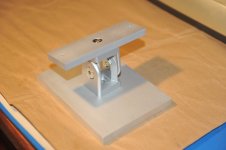rons
Diamond
- Joined
- Mar 5, 2009
- Location
- California, USA
I have read about this for steel. What about for aluminum? Does it depend on the type of aluminum?
Using sand or Ballotini impact beads. Will the surface disruption cause it to become better for a white glove test.
So I'm getting lazy and don't want to paint the world. Just want some peace and quiet and a nice brushed/matt/(anything)
type of finish on Al.
Using sand or Ballotini impact beads. Will the surface disruption cause it to become better for a white glove test.
So I'm getting lazy and don't want to paint the world. Just want some peace and quiet and a nice brushed/matt/(anything)
type of finish on Al.



